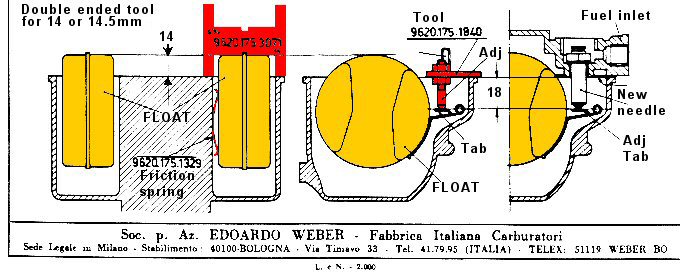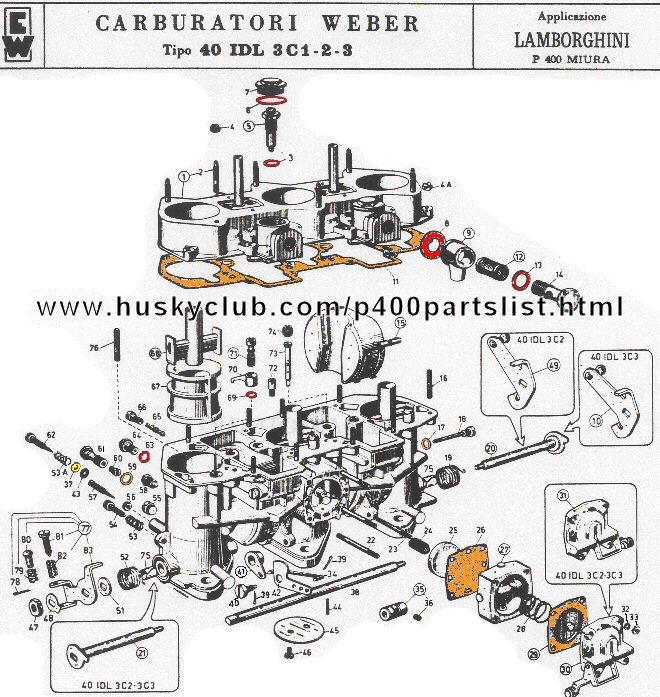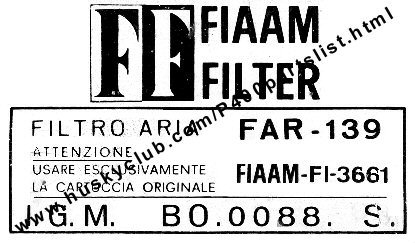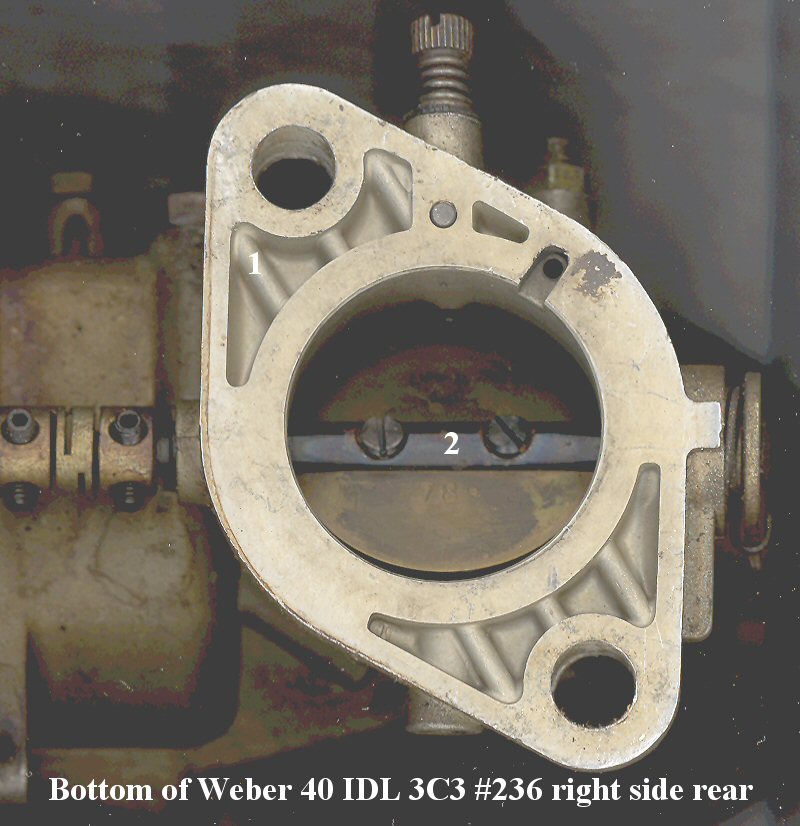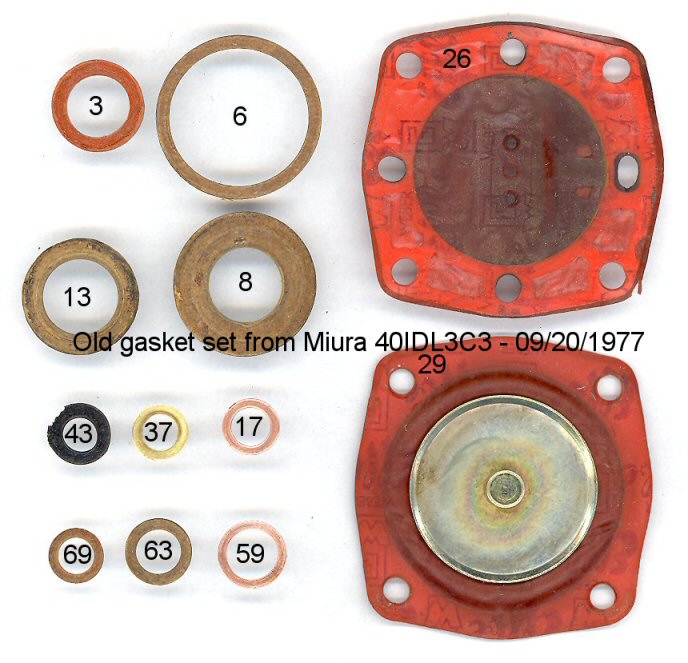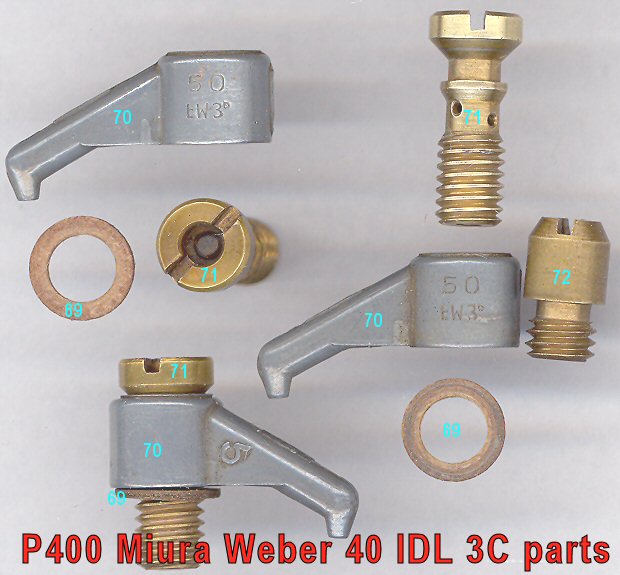number
per carb
40 IDL 3C
vintage
40 IDA 3C
2006
P400
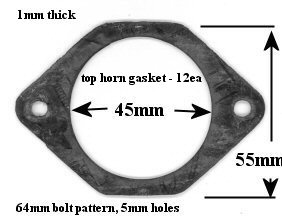
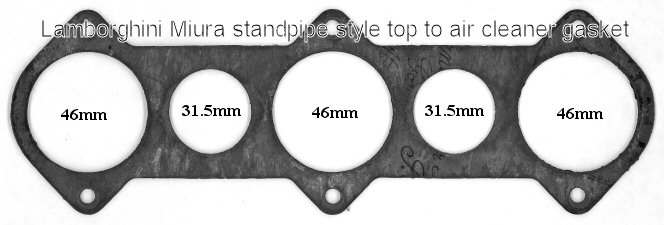


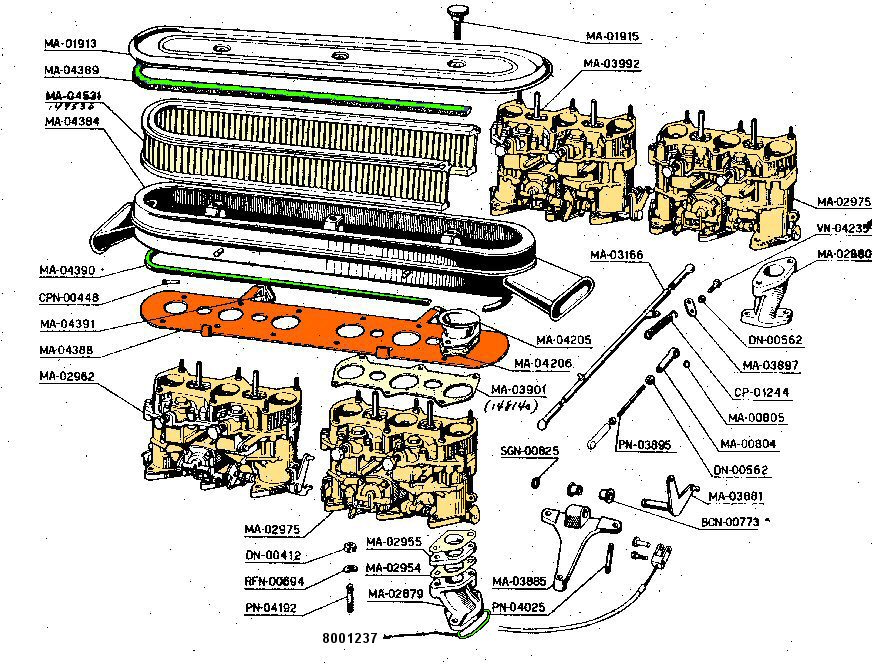
| description |
Lamborghini part number |
OEM manufacture part number |
notes |
||
| filter, air |
MA-04531 |
Fiaam FI-3661 |
Baldwin PA-2093 |
||
| gasket, foam strip top |
MA-04389 |
||||
| gasket, foam strip bottom |
MA-04390 |
||||
| gasket, individual air
horn |
MA-04206 |
||||
| gasket, carb top |
MA-03901 |
||||
| gasket, intake manifold
individual |
MA-02954 |
||||
| isolator, intake manifold
heat |
MA-02955 |
||||
| o-ring, intake manifold
individual |
GN-01237 |
||||
| nut, weber to intake
manifold |
DN00412 |
||||
| washer, weber to intake |
RFN-00694 |
||||
| stud, weber to intake |
PN-04192 |
||||
| Weber 40 IDL 3C -
2ea - left side front/rear |
MA-02975 |
40 IDL 3C1 #xxx |
serial numbered |
||
| Weber 40 IDL 3C -
1ea - right side front |
MA-02962 |
40 IDL 3C2 #xxx |
serial numbered |
||
| Weber 40 IDL 3C -
1ea - right side rear |
MA-03992 |
40 IDL 3C3 #xxx |
serial numbered |
||
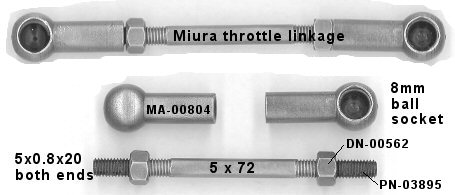

| Description Weber |
Fig # |
Quan |
OEM Weber# |
Current Weber # |
Description Italian |
Size in mm |
notes |
|
| Venturi |
67 |
3 |
34894.002 |
Diffusore |
30 |
32 |
||
| Aux venturi |
68 |
3 |
31966.003 |
Centratore |
4.50 |
|||
| Main Jet |
60 |
3 |
41120.001 |
Getto principale |
1.25 |
1.30 |
||
| Idle jet |
65 |
3 |
41160.003 |
Getto minimo |
0.55 |
|||
| Air bleed |
na |
3 |
Getto aria |
1.10 |
||||
| Accelerator pump jet |
70 |
3 |
41252.001 |
Getto pompa |
0.50 |
|||
| Air jet |
74 |
3 |
41360.001 |
Getto aria di freno |
1.80 |
|||
| Mix tube |
73 |
3 |
61440.151 |
Tubetto emulsionatore |
F 26 |
|||
| Inlet valve |
72 |
1 |
64290.001 |
Valvola aspirazione (con
foro di scario) |
0.50 |
|||
| plate valve |
25 |
1 |
64190.004 |
Valvola a piattello |
closed |
|||
| float needle valve |
5 |
2 |
64240.009 |
Valvola a spillo |
1.75 |
|||
